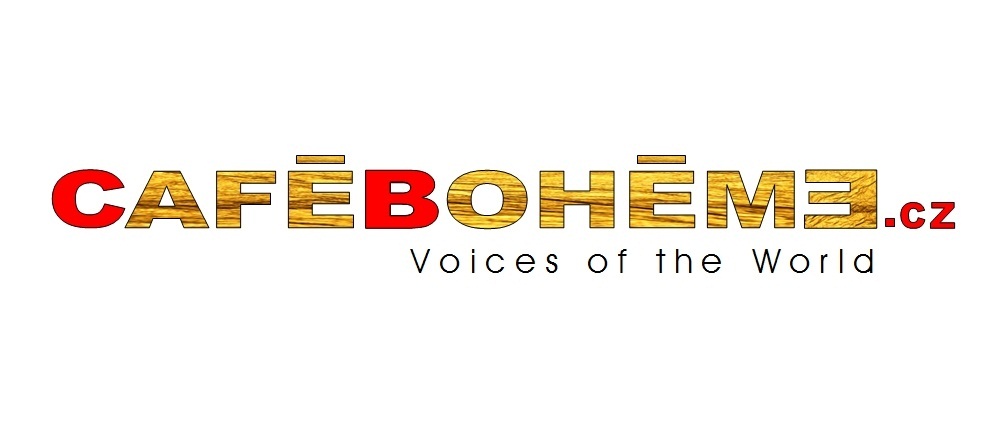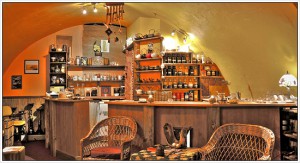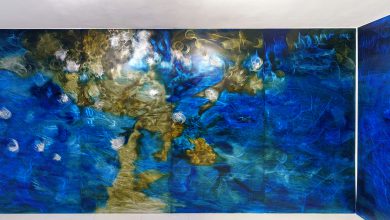
“The Czech Republic is among the first states in Europe per capita consumption of this beverage.
The “čajovna”, a peaceful and quiet meeting place, often decorated in oriental style, with music of Tibetan bells and where time rolls by slowly with the odour of spices”.
 Czech beer is known all over the world for its history, tradition and unique taste. It is no coincidence, then, that according to the latest statistics, the Czechs rank in first position in the world for per-head consumption of this beverage. But there is also another drink, according to statistics, that people particularly appreciate, and that is tea.
Czech beer is known all over the world for its history, tradition and unique taste. It is no coincidence, then, that according to the latest statistics, the Czechs rank in first position in the world for per-head consumption of this beverage. But there is also another drink, according to statistics, that people particularly appreciate, and that is tea.
The Czech Republic with its per-head consumption of this infusion ranks among the top five countries in Europe (270-280 gr. per year). From December 2012 to November 2013, the tea distributors and shops in the country bought 3,662 tons of leaves imported mainly from China, India, Japan and Vietnam, for a turnover of approximately 2.06 billion crowns.
Well known in the East for thousands of years and traded in Europe for the first time by the Dutch East India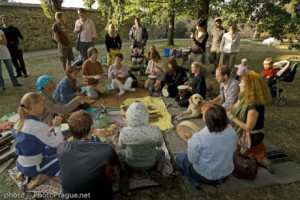 Company in the early seventeenth century, tea has become an increasingly popular drink all over the world for its virtues, and has become a real cultural phenomenon in many countries. Among them there is also the Czech Republic where the appreciation of this drink “has been a reality for over twenty years and not just a fad, as shown by the high and growing number of tearooms and professionals in the industry”. This is a statement by Jaromír Horák, one of the leading Czech tea experts, who has turned his passion for this beverage into a real job. Horák is the owner of a tea school on Kampa island where courses for amateurs and professionals are on the agenda. He is also the promoter of “Čajomír” the national tea festival, an event which brings together hundreds of onlookers and fans, that in 2014 will reach its sixth edition. There are at least a hundred stores specialized in selling this product and over 250 tea-rooms (in Czech called “čajovna”) located in Bohemia and Moravia. These peaceful and quiet meeting places, often hidden in some side street, with characteristic Asian style furnishings, consisting of carpets and soft lighting, with pictures of Indian, Chinese deities, mandala, or plant cultivations in faraway Asia, are enveloped in an atmosphere of music where, among Tibetan bells and other exotic instruments, time seems to flow more slowly, filled with the odour of spices and lulled by the clink of ceramic cups and sound of water inside cast-iron or earthenware teapots. Frequenting these “čajovny” at first, Horák explains, “due to the particular fact that they are places where alcohol is not sold and where you cannot smoke, were mainly people who sought an alternative to the classic restaurants and Czech “hospody”, and made up especially of young people, but not only. Then customers evolved, and nowadays they consist of people of all ages and walks of life”. But if the čajovna is still a point of reference for students and young people in search of peace and quiet or for travellers, who in front of a good Darjeeling or Lung Ching enjoy telling their friends about their travel experiences to the Far East, and for lovers of alternative culture, peppered with New Age and environmental concepts, the tea-room is increasingly also drawing in businessmen and managers, who choose the relaxing atmosphere of this place to meet clients and discuss about business. It is not surprising then if Richard Branson, the British billionaire entrepreneur, founder of Virgin, wrote in his bestseller “Business without secrets” (2008) that “face-to-face conversations are much more effective, and video conferencing is always a sort of makeshift solution compared to a nice cup of tea together”.
Company in the early seventeenth century, tea has become an increasingly popular drink all over the world for its virtues, and has become a real cultural phenomenon in many countries. Among them there is also the Czech Republic where the appreciation of this drink “has been a reality for over twenty years and not just a fad, as shown by the high and growing number of tearooms and professionals in the industry”. This is a statement by Jaromír Horák, one of the leading Czech tea experts, who has turned his passion for this beverage into a real job. Horák is the owner of a tea school on Kampa island where courses for amateurs and professionals are on the agenda. He is also the promoter of “Čajomír” the national tea festival, an event which brings together hundreds of onlookers and fans, that in 2014 will reach its sixth edition. There are at least a hundred stores specialized in selling this product and over 250 tea-rooms (in Czech called “čajovna”) located in Bohemia and Moravia. These peaceful and quiet meeting places, often hidden in some side street, with characteristic Asian style furnishings, consisting of carpets and soft lighting, with pictures of Indian, Chinese deities, mandala, or plant cultivations in faraway Asia, are enveloped in an atmosphere of music where, among Tibetan bells and other exotic instruments, time seems to flow more slowly, filled with the odour of spices and lulled by the clink of ceramic cups and sound of water inside cast-iron or earthenware teapots. Frequenting these “čajovny” at first, Horák explains, “due to the particular fact that they are places where alcohol is not sold and where you cannot smoke, were mainly people who sought an alternative to the classic restaurants and Czech “hospody”, and made up especially of young people, but not only. Then customers evolved, and nowadays they consist of people of all ages and walks of life”. But if the čajovna is still a point of reference for students and young people in search of peace and quiet or for travellers, who in front of a good Darjeeling or Lung Ching enjoy telling their friends about their travel experiences to the Far East, and for lovers of alternative culture, peppered with New Age and environmental concepts, the tea-room is increasingly also drawing in businessmen and managers, who choose the relaxing atmosphere of this place to meet clients and discuss about business. It is not surprising then if Richard Branson, the British billionaire entrepreneur, founder of Virgin, wrote in his bestseller “Business without secrets” (2008) that “face-to-face conversations are much more effective, and video conferencing is always a sort of makeshift solution compared to a nice cup of tea together”.
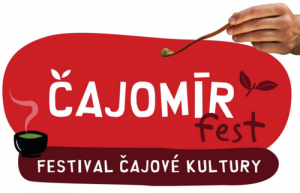 Obviously, the classic tea bags commonly used at home are not permitted in these temples. These types of teas, in fact, are called “dust” in slang and are looked down upon by connoisseurs, because of their low-quality content and fragments of dried leaves, as the word itself implies. Do not be surprised, then, if among the dozens or hundreds of varieties of tea found in a čajovna, you will not find the classic bags of tea.
Obviously, the classic tea bags commonly used at home are not permitted in these temples. These types of teas, in fact, are called “dust” in slang and are looked down upon by connoisseurs, because of their low-quality content and fragments of dried leaves, as the word itself implies. Do not be surprised, then, if among the dozens or hundreds of varieties of tea found in a čajovna, you will not find the classic bags of tea.
But where does the Czech Republic passion and interest for tea and its culture derive from?
According to Horák, “It’s hard to find a single reason, but it is true that during communism, little was known of the East and, as a consequence, that fascinated Czechs who, by their nature, tend to be very romantic. So, with the fall of communism, the trend of travelling to the East caught on and, consequently, that of oriental style čajovny”.
The Czech writer and journalist, Jan Neruda, mentions tea in one of his writings in 1876 and Karel Havlíček Borovský had already written about this beverage in 1845.
The first Prague čajovna, however, was opened in 1908 by the writer, traveller and collector of Japanese art, Joe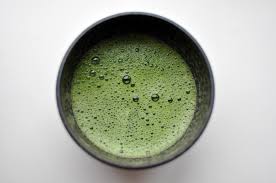 Hloucha (1881-1957), who along with his brother, created a Japanese tea house in Prague during the Exhibit Jubilee of the Chamber of Commerce. At the end of the event the čajovna was moved to the Lucerna Palace in the centre of Prague, also thanks to the support of Eng. Václav Havel, the grandfather of the future president with the same name. Since then, other tea-rooms, shops and Czech import companies of the drink have seen the light of day. The drink spread rapidly until the advent of real socialism, during which, according to what the Czechs say, it would be an understatement to call “tea” what you could find in the Country in that period. After the fall of the regime, President Václav Havel received the Japanese tea master Sosicu Sen XV at the palace, who gave him an exemplary demonstration of the traditional Japanese Tea Ceremony, in front of political authorities, tea lovers and other onlookers. This gave a strong impetus to the development of tea culture in the Country and, not coincidentally, since that year we can speak of a real boom in tea consumption.
Hloucha (1881-1957), who along with his brother, created a Japanese tea house in Prague during the Exhibit Jubilee of the Chamber of Commerce. At the end of the event the čajovna was moved to the Lucerna Palace in the centre of Prague, also thanks to the support of Eng. Václav Havel, the grandfather of the future president with the same name. Since then, other tea-rooms, shops and Czech import companies of the drink have seen the light of day. The drink spread rapidly until the advent of real socialism, during which, according to what the Czechs say, it would be an understatement to call “tea” what you could find in the Country in that period. After the fall of the regime, President Václav Havel received the Japanese tea master Sosicu Sen XV at the palace, who gave him an exemplary demonstration of the traditional Japanese Tea Ceremony, in front of political authorities, tea lovers and other onlookers. This gave a strong impetus to the development of tea culture in the Country and, not coincidentally, since that year we can speak of a real boom in tea consumption.
 Among the first tea rooms opened in Prague after the Velvet Revolution we have to remember: “U Čajovníka na Boršově”, “U zeleného čaje” in Nerudova Street and “Dobrá čajovna” in Václavské náměstí, which for a long time was predominant on the market. Since 1991, the number of specialty stores, where you can buy tea from all over the world, increased sharply and in particularly high quality tea such as Korean, Japanese or the famous “oolong” from Taiwan. Particularly interesting is also the amount of publications on the subject. There are, in fact, many popular specialist publications on tea every year, as well as articles in magazines and newspapers. But what are favourite types of tea of Czech people? According to Horák: “Czechs mainly drink fruit flavoured tea (Ovocný čaj), but also green tea is very popular and comes in second place”. Before concluding the argument, a quick recommendation. If you are in čajovna and you have ordered a cup of tea, before drinking it you should smell its nice aroma, analyze its colour, and then stop a few seconds to enjoy its aftertaste. Enquire about its characteristics from those, who with much love and dedication, have prepared it for you. In the words of the writer Okakura Kakuzo: “Tea is a work of art, and only the hand of a master can reveal its noblest qualities”. But, please, if they have not brought you any sugar, do not ask for it!
Among the first tea rooms opened in Prague after the Velvet Revolution we have to remember: “U Čajovníka na Boršově”, “U zeleného čaje” in Nerudova Street and “Dobrá čajovna” in Václavské náměstí, which for a long time was predominant on the market. Since 1991, the number of specialty stores, where you can buy tea from all over the world, increased sharply and in particularly high quality tea such as Korean, Japanese or the famous “oolong” from Taiwan. Particularly interesting is also the amount of publications on the subject. There are, in fact, many popular specialist publications on tea every year, as well as articles in magazines and newspapers. But what are favourite types of tea of Czech people? According to Horák: “Czechs mainly drink fruit flavoured tea (Ovocný čaj), but also green tea is very popular and comes in second place”. Before concluding the argument, a quick recommendation. If you are in čajovna and you have ordered a cup of tea, before drinking it you should smell its nice aroma, analyze its colour, and then stop a few seconds to enjoy its aftertaste. Enquire about its characteristics from those, who with much love and dedication, have prepared it for you. In the words of the writer Okakura Kakuzo: “Tea is a work of art, and only the hand of a master can reveal its noblest qualities”. But, please, if they have not brought you any sugar, do not ask for it!
by Mauro Ruggiero, from Progetto Repubblica Ceca
